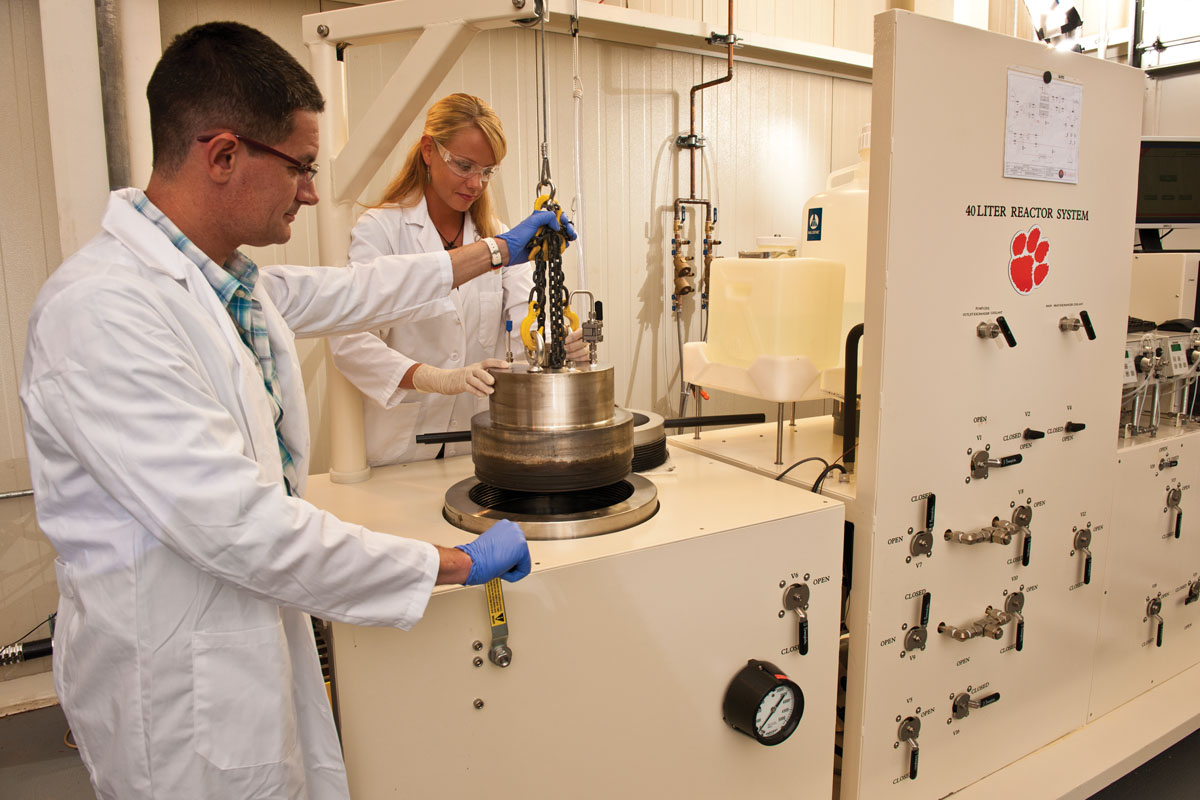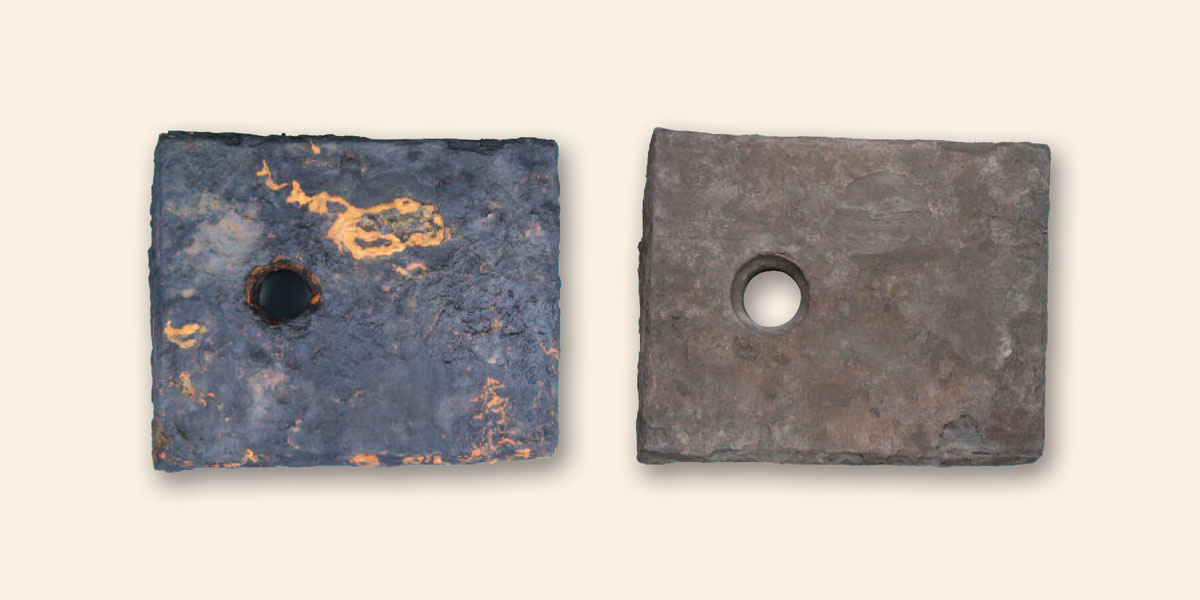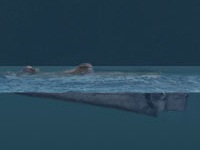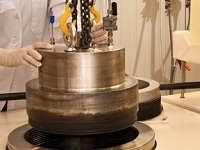Ridding metal of salt
stories by Frank Stephenson
Museums throughout the world groan beneath the weight of iron artifacts recovered from the sea. Everything from cookware to cannon sit soaking in various solutions awaiting the day they’ll be cured from the saltwater poisoning that threatens to tear them apart from the outside in. The process isn’t for anyone in a hurry. Even a twelve-pound cannonball can take years in the bath before it’s stable enough to be put on display.

Nestor Gonzalez-Pereyra, a chemical engineer with the Lasch Center, and conservator Liisa Nasanen open the top of a canister where salt-impregnated metal artifacts undergo treatment in the center’s patented subcritical reactor. Image courtesy of Ray Stanyard.
Of all the countless conservation labs in the world, only one has the capability of curing iron artifacts in a fraction of the time typically required. In 2006, Michael Drews filed a U.S. patent, which was issued in 2011, on what could be a revolutionary method for treating archaeological iron.
After more than 150 successful treatments of various artifacts, Drews’ process is turning skeptics (conservation pros are wary of magic bullets, and for good reason) into advocates the world over. While the device they’ve developed at the Lasch Center isn’t yet big enough to treat something the size of a cannon (much less the size of a Hunley), for small objects the results are a conservator’s dream.
Recently, his team “cured” a sixty-pound Civil War cannon shell recovered from Charleston Harbor’s Fort Sumter in two weeks, a task that using traditional methods would have taken years, says Liisa Nasanen, a research scholar who helps run the treatment process. “Not only did we finish this shell in two weeks, but it still had almost all of its surface left intact. In the traditional way, we could have risked losing some of that.”
The new process uses a super-hot, dilute alkaline solution (weak sodium hydroxide, or lye) under high pressure to basically cook embedded chloride ions out of saturated metal. Seawater is loaded with chlorides, the most viciously corrosive agent that iron-bearing objects face in a marine environment. The Lasch Center treatment rapidly and efficiently removes chlorides and transforms the iron corrosion products into their most stable forms.

On the left: a ballast block before treatment. On the right: after treatment. Using a pressurized chamber to extract corrosive salts, the subcritical technology speeds conservation. A batch of five blocks took only seven days of treatment. Conventional treatments take much longer—an average of one year of electrolysis and two to three years of soaking in fresh water. Image courtesy of Friends of the Hunley.
In 2002, Drews, a professor emeritus of Clemson’s Department of Materials Science and Engineering, got the idea of treating Hunley iron artifacts with a process he had experimented with during years of research on textiles and other materials. He specialized in studying processes that used super-heated fluids under high pressure and temperature. For decades, industry has used such techniques in applications ranging from decaffeinating coffee to dying cloth.
The twist on the industrial process used at the Lasch Center is that the sodium hydroxide bath is used at what chemists call “subcritical” conditions. By pressurizing the reactor first and then raising the temperature, researchers generate very hot liquids that do not boil. Lasch Center scientists and engineers typically use baths heated to around 350 degrees Fahrenheit and kept in liquid form by pressures of up to 800 pounds per square inch.
In 2003, Drews borrowed a supercritical water oxidation device—called a reactor—from a campus colleague and converted it to running subcritical experiments at the center. The results were so promising that in 2007 the Lasch Center designed and built its own subcritical reactor. The machine has a reaction chamber big enough to treat an object measuring as much as a foot in diameter and two-and-a-half feet long.
The word about the Lasch Center’s subcritical extraction method is getting around the world’s conservation community. Ian Macleod, executive director for collections management and conservation at the Western Australian Maritime Museum in Perth and consultant on the conservation of the Civil War ironclad U.S.S. Monitor, says, “I believe that this is the most significant advance in metals conservation in more than eighty years. It is without doubt the most efficacious and non-destructive method of conserving archaeological iron that has ever been developed.”
Both the Lasch Center team and MacLeod hope the process can be scaled up to treat much larger pieces, such as whole cannon and entire sections of ship hulls. Technically, there’s no reason this can’t happen, Drews says. Economics will heavily dictate any scale-up, the first feasible stage of which likely will be designed to accommodate an average cannon from the Civil War.
Today, the most efficient traditional methods can treat such a field piece in about seven years. Drews believes the Lasch method could finish the job in a month.
Nearly 150 years later, it’s still the mystery that a dozen years of studying the Hunley’s bones has yet to solve.
In addition to the subcritical treatment of archeological iron, Clemson research on the Hunley archeology project has produced two other promising spin-off technologies. Read more.




